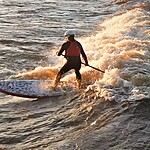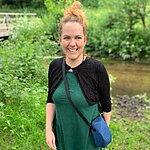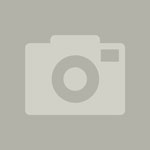You need to be registered to request to join groups.
Sign Up
Riverwatch
Leaderboard

5310 Points

4530 Points

3420 Points

3170 Points

3010 Points
About
Riverwatchers identify themselves with specific sections of the Ottawa river or one of its tributares and become involved in ways that reflect their own interest, time and skills. Each Riverwatch group identifies the activities in their local community that may be having an impact on the river. Together, they work with Ottawa Riverkeeper to find effective solutions to their local problems.
As part of the program, our Riverwatchers participate in our water quality monitoring program.
Water testing protocol
Riverwatchers conduct water quality tests monthly during the ice-free season.
The Riverwatcher test kits measure a number of key water quality parameters that are indicators of river health for aquatic life.
• Water temperature: Aquatic organisms are adapted to specific temperature ranges. If temperatures move outside optimal ranges it can stress organisms. Water temperatures also impact the rates of chemical transformations in water and the amount of oxygen that the water can hold, biological process of organisms and their ability to tolerate toxins and other stressors. Changes in temperature occur with changes in weather, climate, vegetation cover, dams, the width and depth of the river, as well as water input from sewers, factories, groundwater and tributaries.
• pH (acidity): Also affects chemical and biological processes in the water and is a measure of the concentration of hydrogen ions in the water. Organisms have ideal ranges of pH which they can tolerate. When pH becomes more acidic toxic elements can be mobilized impacting aquatic life. Factors affecting pH include acid rain, the composition of surrounding rock, some waste water discharges, and algal blooms.
• Water clarity/turbidity: Water clarity measures how clear the water is and how far light can travel through the water column. The amount of materials that are suspended in the water columns decrease the amount of light that can pass through the water column. Materials can include sediment (clay, silt, sand) and small organisms (algae, microbes, plankton). The more suspended material in the water column, the lower the water clarity and higher the turbidity. Low water clarity can increase temperatures thus reducing the oxygen content of water, it can limit visibility for fish impacting their ability to feed, clog fish gills, and reduce photosynthesis for aquatic plants. Water clarity is decreased by soil erosion (from shoreline vegetation losses), waste/sewer discharge, and algae growth.
• Observations: An important component of the program are the observations that Riverwatcher make during their testing. Observations on the state of shorelines, human activity, water color, interesting species etc. are all important pieces of information that give us a better sense of the state of the river.
Important Links:
Riverwatch Handbook: http://www.ottawariverkeeper.ca/wp-content/uploads/2015/09/Riverwatch-Handbook_EN-final2.pdf
Areas monitored
Unit 301, 275 Bay Street
Ottawa, Ontario
Canada
K1R 5Z5

